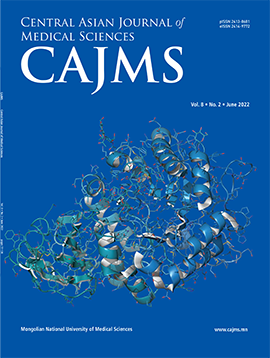Compassion Fatigue among Physicians and Nurses Working in the Intensive and Critical Care Units of Hospitals in Ulaanbaatar, Mongolia
DOI:
https://doi.org/10.24079/cajms.2018.03.003Keywords:
Burnout, Compassion Fatigue, Quality of Life, Secondary Traumatic StressAbstract
Objectives: The purpose of this study was to investigate the current state of the burnout and secondary traumatic stress among physicians and nurses in units of hospitals in Ulaanbaatar, Mongolia. Methods: We used a validated questionnaire of the ProQOL-5 Scale to assess the compassion fatigue of physicians (n=58) and nurses (n=139) who worked in critical and intensive care, neurosurgery, internal, burn, and palliative care units. We used a descriptive analysis to estimate the correlation between burn out and secondary traumatic stress scores across demographic categories. Results: A total of 197 study participants were recruited in our study. There were 78.7% of all participants had a higher risk of developing burn out and 82.2% of all participants had a higher risk of developing secondary traumatic stress respectively. High levels of burn out were identified among physicians compared with nurses (20.7% vs. 25.9%) respectively, with physicians having a higher prevalence of secondary traumatic stress than nurses by 5.8% . The increased prevalence of secondary traumatic stress was significantly correlated with the number of patients cared for per day (r=0.207, p<0.01) and the unit in which the care provider worked (r=0.163, p<0.01) by the univariate and bivariate analyses. Conclusion: Participants with higher prevalence of burn out and secondary traumatic stress work in high stress units and cared for more patients per day. Physicians had a higher prevalence of burn out that nurses.
Downloads
267
Downloads
Published
How to Cite
Issue
Section
License
Copyright (c) 2018 Mongolian National University of Medical Sciences

This work is licensed under a Creative Commons Attribution-NonCommercial 4.0 International License.




